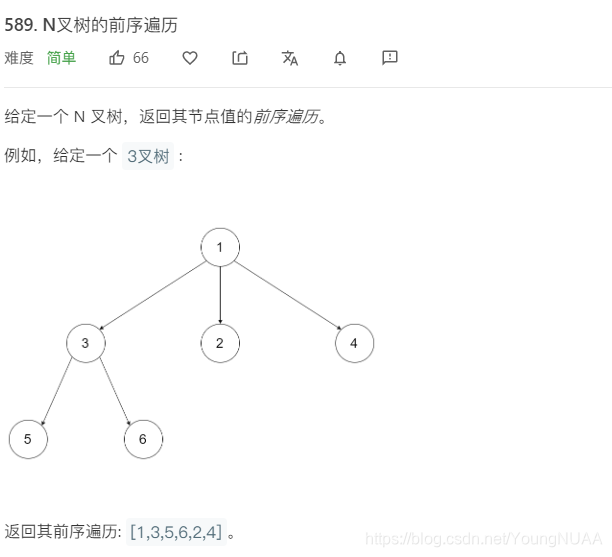Day10

递归:
/*
// Definition for a Node.
class Node {
public int val;
public List<Node> children;
public Node() {}
public Node(int _val) {
val = _val;
}
public Node(int _val, List<Node> _children) {
val = _val;
children = _children;
}
};
*/
//前序遍历
class Solution {
List<Integer> NodeList = new LinkedList<>();
public List<Integer> preorder(Node root) {
if(root==null){
return NodeList;
}
NodeList.add(root.val);
for(Node child:root.children){
preorder(child);
}
return NodeList;
}
}
//后序遍历
class Solution {
List<Integer> ans = new LinkedList<Integer>();
public List<Integer> postorder(Node root) {
if(root == null){
return ans;
}
for(Node child:root.children){
postorder(child);
}
ans.add(root.val);
return ans;
}
}
//非递归--前序遍历
class Solution {
public List<Integer> preorder(Node root) {
List<Integer> stack = new LinkedList<>();
List<Integer> output = new LinkedList<>();
if(root == null){
return output;
}
stack.add(root.val);
while(!stack.isEmpty()){
Node node = stack.pollLast();
output.add(node.val);
Collections.reverse(noed.children);
for(Node temp:node.children){
stack.add(temp);
}
}
return output;
}
}

解析:

class Solution {
int ans;
public int diameterOfBinaryTree(TreeNode root) {
ans = 1;
depth(root);
return ans - 1;
}
public int depth(TreeNode node) {
if (node == null) return 0; // 访问到空节点了,返回0
int L = depth(node.left); // 左儿子为根的子树的深度
int R = depth(node.right); // 右儿子为根的子树的深度
ans = Math.max(ans, L+R+1); // 计算d_node即L+R+1 并更新ans
return Math.max(L, R) + 1; // 返回该节点为根的子树的深度
}
}